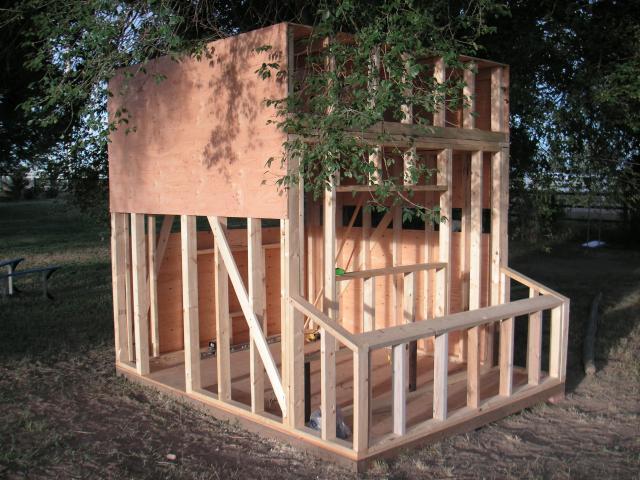Quote:
I rest my case!
yes, though neither of those items are supposed to be direct exposure applications. Below is a link to publications from the Building and Construction Technology Department of The University of Mass, Amhearst. I think it gives a fair summation of the properties of OSB.
http://bct.eco.umass.edu/publications/by-title/choosing-between-oriented-strandboard-and-plywood/
For those who do not wish to delve that deep, here is an excerpt of the above paper which mimics my personal experiences:
"Performance is similar in many ways, but there are differences in the service provided by osb and plywood. All wood products expand when they get wet. When osb is exposed to wet conditions, it expands faster around the perimeter of the panel than it does in the middle. Swollen edges of osb panels can telegraph through thin coverings like asphalt roof shingles.
The term ghost lines or roof ridging was coined to describe the effect of osb edge swelling under thin roof shingles. The Structural Board Association (SBA), a trade association that represents osb manufacturers in North America, has issued a technical bulletin outlining a plan to prevent this phenomenon. SBA correctly indicates that dry storage, proper installation, adequate roof ventilation and application of a warm-side vapor barrier will help prevent roof ridging.
Irreversible edge swelling has been the biggest knock on osb. Manufacturers have done a good job of addressing this issue at the manufacturing facility and during transportation by coating panel edges. But the reality is that builders dont limit osb use to full-sized sheets. The edges of cut sheets are seldom if ever treated in the field. Houses under construction get rained on. And if you use osb in an area of very high humidity, like over an improperly vented attic or over a poorly constructed crawlspace, you are asking for trouble.
Osb responds more slowly to changes in relative humidity and exposure to liquid water. It takes longer for water to soak osb and conversely, once water gets into osb it is very slow to leave. The longer that water remains within osb the more likely it is to rot. Wood species has a significant impact. If osb is made from aspen or poplar, it gets a big fat zero with regard to natural decay resistance. Many of the western woods used to manufacture plywood at least have moderate decay resistance.
In the past weve heard that walls in many Southeastern homes covered with the Exterior Finish and Insulation System (EIFS) were rotting. Rigid foam insulation was applied over osb and coated with a stucco-like covering. When the exterior foam boards were removed, wet, rotted, crumbling osb was exposed. Osb was slammed in the press. The problem really isnt osbs fault. All cases Im familiar with were caused by improper installation of flashing or protective coverings."
and so,....






